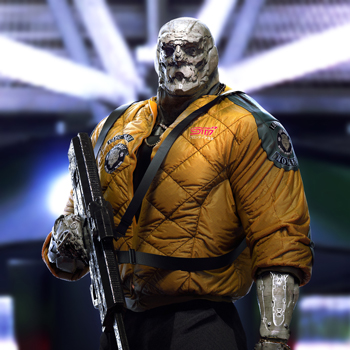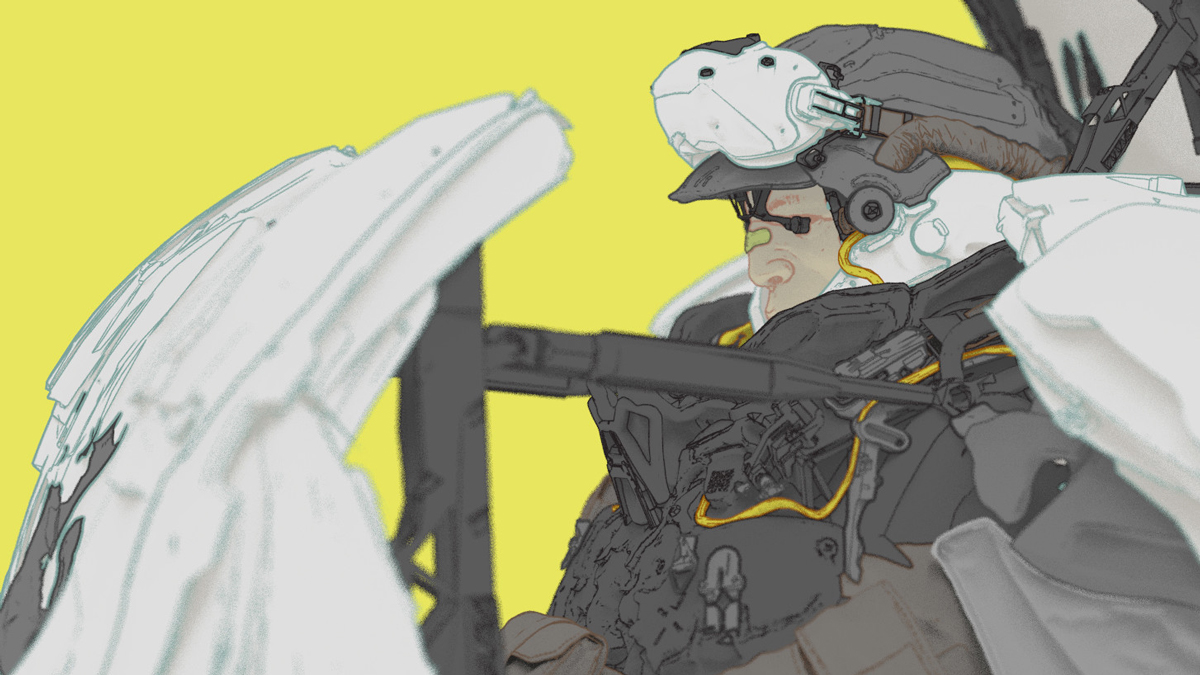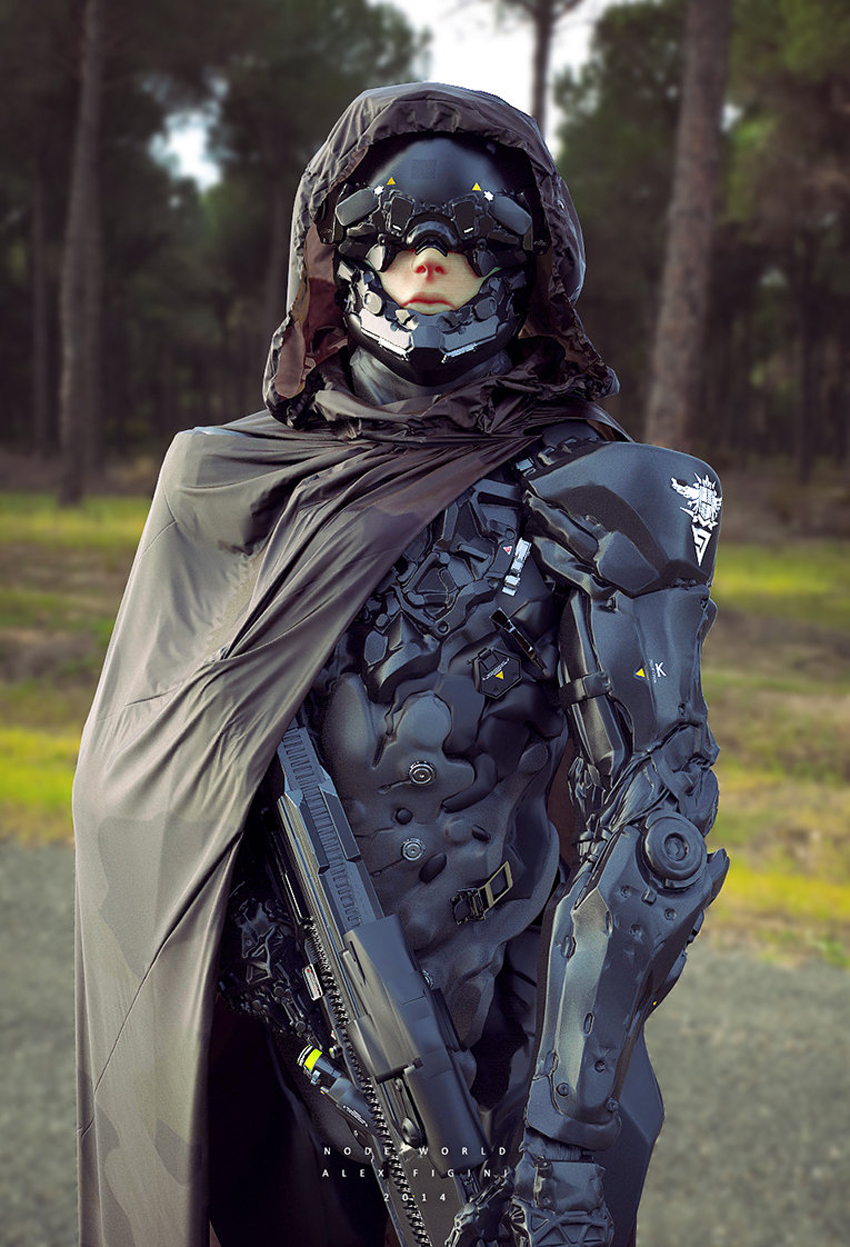Alex Figini is an artist in the entertainment industry as well as an instructor at Learn Squared. Here, we talk to him about how he got started and why he uses KeyShot to explore his character and scene development.
Alex Figini
Artstation
What sparked your interest in becoming a Concept Artist?
It’s a long road that got me here! Like a lot of people, I always loved drawing as a kid and I loved playing video games. I started out copying my favorite comics from about age 7. They were awful, often traced and with that obvious traced quality about them. I remember even back then I wasn’t happy with the results. I kept drawing. At about 10 I saw my first anime movies, Akira, Vampire Hunter D and Fist of the North Star being some of the first. Needless to say, these films totally blew me away. Anime became a huge part of my early teens. I and my buddies would get new VHS tapes weekly, we’d huddle around the TV completely engrossed with the worlds they opened up to us, and in retrospect, I think this period was quite pivotal in what would attract me towards concept art.
With this feeling of wanting to pursue a creative field in the back of my mind, I went on to study Art and Design at college focusing on traditional media and then moving towards digital media at university when I studied Multi-Media Design. My university course gave me a taste of various disciplines. One module was focused on art for games, both 2D and 3D. Based on this, I decided that a role as a concept artist for the games industry is what I would aim for.
 What was the turning point in your career?
What was the turning point in your career?
Other than getting my first job in the industry and then going freelance after 12 years in-house, I think the biggest turning point for me as a concept artist was moving away from the traditional 2D workflow (which was pretty much 100% Photoshop) to a 3D focused workflow. I began using ZBrush daily around 2014 when I was working at BioWare on Anthem and I’ve never looked back. The main reason for doing this at the time was because I was having trouble with a misinterpretation of ‘volume’ of my 2D designs when I handed over to one of the 3D production artists to create in-game assets. Using ZBrush to concept resulted in a 3D file, which meant it could be designed, viewed and reviewed from all angles with almost no room for misinterpretation. Obviously, I still use Photoshop for many tasks but using ZBrush, Keyshot and the Bridge totally changed my workflow and approach to design.
My art director loved the results that using this software yielded so I passed my limited knowledge onto my immediate peers who were working with me on the project. They all fell in love with the software pretty much immediately which was great to see.
Mirroring this, one of the highlights of my career was having the opportunity to work with the guys at Learn Squared to share my workflow to a broader audience. With their help and platform, I developed “Concepting in ZBrush”, an online course where I teach my workflow for ZBrush, Marvelous Designer, and KeyShot. I had so many amazing artists take the course, the results were mind-blowing for me. So many people have said it changed their approach to concept art, to say it has been an incredibly rewarding experience would be an understatement. You can check out the trailer here.
What is unique about your approach to a project?
That’s a tough one. I think each artist inherently will have a different approach to a project, purely because that person has had experiences, influences and tastes unique to them. I have ‘digested’ these things and from that I bring my own flavor, so to speak. On a practical level, I like to be adaptable, each task can be approached in a number of ways and the design process is often akin to problem-solving. For a concept artist, ideas are key. Being able to quickly concept in 3D, iterate with speed and still retain the believability in order to sell an idea is paramount.
What is your primary 3D modeling software?
As I mentioned previously, I use ZBrush for my modeling. I LOVE that software, honestly. I feel like a kid again when I’m in there, the flexibility and amount of creative control you have are unmatched in my opinion, perfect for my role as a concept artist. I find it great for exploring designs and has an incredible amount of features and functionality. That combined with KeyShot and the bridge… Bam! That’s a winning combination for someone like me.
Where in the process do you use KeyShot?
When I want to present my work I use KeyShot. Its so easy and the results are fantastic. A one-button press from ZBrush and it’s in, ready to have mats applied, cameras set up, and renders queued. KeyShot is integral to my process now and allows me to quickly visualize with great believability. Due to the speed of the workflow, I’d say its essential for any ZBrush user.
What advice would you give to someone interested in doing what you do?
As it served me well, I would say begin with a traditional 2D foundation before rushing into learning 3D, or at least study them in tandem. This will help with your design sense and give you a good set of tools for when you do delve into that area. Aim high and be critical of your work. Most importantly, keep sight of your inner child and try not to forget why you got into the field in the first place!












